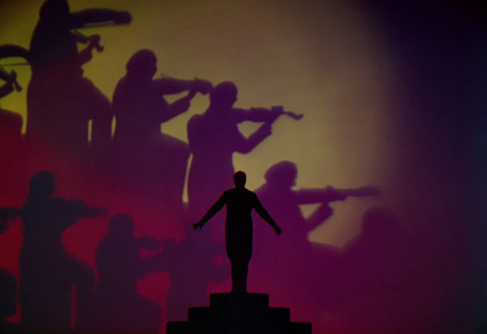Last week there was a Saturday matinee viewing of Disney’s Fantasia at Broadway cinema in Nottingham and I missed it. This was slightly devastating because Fantasia is a film that I have loved for a very long time and the prospect of seeing it on a big screen was very, very exciting. It is a stunning love letter to both the art of animation and classical music, which I’m sure were both sweeping in their scale on the big screen. And I bloody missed it.
It was through Fantasia, and the ingenuity of the art and story-telling teams that helped to create it, that my interest in classical music was sparked. As a child, and even now as a (more or less) adult, classical music has sometimes felt kind of ‘beyond’ me. When I was younger, it reeked of ‘posh’, of older people driving around in Volvo estates or wearing suits and nodding along knowingly to some movement of this piece by that dead guy. The classical music I enjoyed when I was little was music that explicitly told a story, for example Prokofiev’s Peter and the Wolf (even though, interestingly, the grandfather and wolf parts both scared me shitless) or that I could dance to. Fantasia captured my imagination and, subsequently, each of the pieces of music brought to animated life now has a special place in my heart.

The combination of high musical art with the low brow familiarity of cartoon animation, rooted as it is in child-friendly bright colours, humour and anthropomorphic animals, is highly effective. Bringing both forms into conversation with one another undoubtedly broadens the way in which we think about both. The mass production and appeal of cartoon animation offers a friendlier introduction to the obscure and privileged world of classical music. Similarly the drama of classical music, and the requirement of animation to creatively and accurately interpret inflections, time signatures and important ideas within the pieces’ structures, elevates the artistry and production of animation.

It’s hard to narrow down which segment of the Fantasia programme I like the most: I have a very soft spot for The Nutcracker Suite by Tchaikovsky, Dance of the Hours by Amilcare Ponchielli and Beethoven’s Pastoral Symphony (I really wanted to make friends with a pink unicorn or a flying horse, and my sister and I used to shelter all our cuddly toys under blankets during the storm).[1] As I’ve grown older, I have a renewed appreciation for Bach’s Toccata and Fugue in B Minor, which I initially thought was slightly boring but now find completely captivating. However, I think it is Stravinsky’s The Rite of Spring that has been the most enduringly important piece of music that Fantasia introduced to me.

I remember listening to Deems Taylor’s introduction of the piece and referring to the music as originally written for a ballet, displaying ‘a simple series of tribal dances’. Listening and watching the unfolding animation had me begging desperately: How on earth could you do ballet to THIS?! My conception of ballet as a world of tutus, pointe shoes and graceful arabesques, incidentally seen elsewhere in Fantasia, was completely at odds with this frightening, stompy music. Music that helped to depict violent volcanic eruptions, a T-Rex fighting and killing a slow and considerably weaker stegosaurus, the eventual death march and extinction of all the dinosaurs, and an eerie eclipse hovering over this pockmarked, burnt out planet. The pained and wailing face of a diplodocus trapped in mud and burning in the heat is seared into my memory. No, this, whatever this was, was not conducive to ballet at all.
At the time, I had no idea that this type of music required an entirely different type of dancing, which I later explored at length in my Master’s dissertation. Indeed, I wouldn’t have written that dissertation at all if my interest hadn’t been piqued at such a young age. Fantasia rearranges the music of the original ballet quite significantly, but it is still an exceptional introduction to a truly staggering piece of music. I will no doubt bring The Rite of Spring to my blog at a later date, because it is such an important piece of music to me that has followed me around for many years. But for now, I want to appreciate just how wonderful Fantasia is and how grateful I am that, in spite of its limited commercial success in 1940, it has endured.
And I bloody missed it last week.
[1] I want to acknowledge here the problematic nature of Disney’s visualisation of The Pastoral Symphony in particular. This segment featured heavily racist stereotypes in the first production, which have since been edited out, and a beauty contest where the ‘pretty’ (read: not black) centaur women strut about and are picked one at a time by handsome centaur men to be their lovers. The racism and sexism is obviously unacceptable and makes for uncomfortable viewing.



















